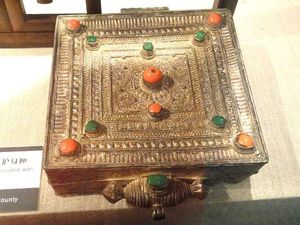The laughing kookaburra, scientifically known as Dacelo gigas, is a well known symbol of Australia’s birdlife. It’s not a very large bird, measuring only about 15-18 inches (39-45 cm) and weighing about 13-16 ounces (368-455 grams) with females being larger than the males. They got their name due to the fact that family groups will let out a territorial call at both dawn and dusk that sounds like a mixture of belly laughs, chortles, hoots and trills. These small creatures can live 15 years on average and even up to 20 years in captivity.
Laughing kookaburras can be found in eastern and southwestern Australia, in Tasmania and even New Zealand. They will build their nests in tree holes and remain there all year long. Though they prefer dry forests with streams, some will settle into backyards, gardens and even parks. They will advertise their territory to others through their famous dawn and dusk “laugh riots.” They also have many other calls for different situations such as alerting others, showing aggression, mating, and finding others.
The diet of a laughing kookaburra consists of things like rodents, amphibians, crabs, insects, and even small reptiles. They will wait patiently on a perch for prey to pass by. Once it has found something it will swoop down, land next to its finding and grab it with its bill. The kookaburra then takes its food up to a perch where it will beat it against a branch (sometimes dropping it from midair onto the ground) to both kill and soften its meal. It will then proceed to swallow its prey head first and whole.
A pair of laughing kookaburras will mate for life. The male will feed the female for about six weeks before her eggs are laid. She will lay 2-3 eggs at a time in a nest that may be shared with another female. Laughing kookaburra families will all take turns incubating the eggs. Everyone from offspring from a previous year that are learning about parental care to other couples who are waiting for the time to take the territory will share in taking care of the eggs. After around 20-22 days, the eggs will hatch and the newborns will come into the world. Chicks are often given small snakes to help teach them how to hunt. The offspring will remain with their parents for about four years, helping protect the territory and raising the newborns until they take off to establish their own territory.
Laughing kookaburras are not an endangered species; in fact they are quite adaptable. They do, however, still require forest areas for hunting and nesting. This makes habitat loss their greatest and most immediate threat. Being such a unique creature, it deserves to be respected and protected by humans. With enough effort, the laughing kookaburra won’t ever have to be endangered.
Resources:
“Laughing Kookaburra” 5 November 2010
“Laughing Kookaburra” 5 November 2010
“Birds: Laughing Kookaburra” 5 November 2010

